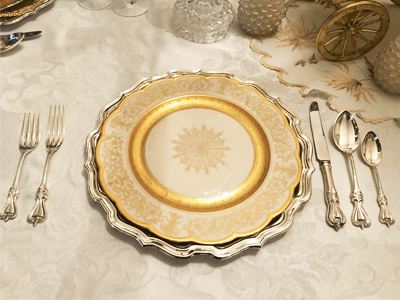Gold Plating Services

Gold has superior electrical conductivity and resistance to corrosion. It is indestructible and completely recyclable. Gold is immune to the effects of air, water, and oxygen and it will not tarnish, rust, or corrode. Gold is one of the most electrically conductive metals, able to carry electrical current in temperatures varying from –55 to 200 degrees centigrade. It is very ductile and is also the most reflective and least absorptive material of infrared energy.
Industrial Gold Plating & Commercial Gold Plating
In electroplating, gold has a large variety of commercial and industrial uses. Jewelry and dinnerware are often gold plated. Electrical contacts and connectors are gold plated in the automotive, telecom, electronics, and semiconductor industries. Reflectors are gold plated for the aircraft and aerospace industries. The medical and dental industries use gold plating for braces and implants.
Gold Electroplate Specifications
Gold electroplate can be applied utilizing either rack fixture or barrel plating technologies. Typically a gold electroplating specification will specify the purity percentage, hardness, and thickness. A typical gold electroplate thickness will range from 0.25 to 5 microns. A minimum coating of 7 millionths of an inch is required to be classified as gold electroplate, otherwise it is considered as gold wash. Soft gold electroplate (knoop hardness 90 max.) is usually designated for semiconductor, compression, solderability, and high temperature applications. Hard gold electroplate (knoop hardness 130 minimum) is used for general purpose or wear resistant applications. Some of the more common gold plating specifications include ASTM B 488, AMS 2422, AMS 2425, and MIL-DLT-45204D.
